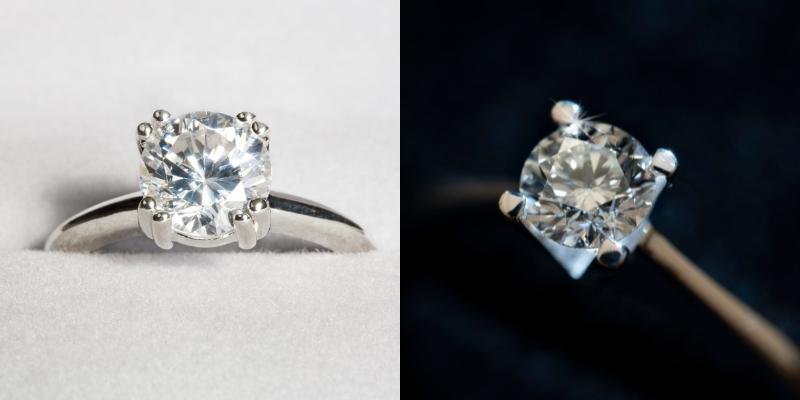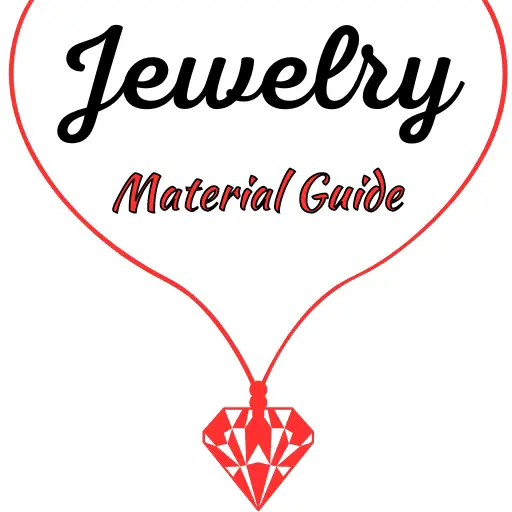When shopping for the perfect diamond you’ll be torn between getting a colorless or near colorless diamond. Price differences aside, both categories are beautiful in their own way and have surprisingly vocal fan clubs. So let’s compare the key points of colorless and near colorless diamonds, so you can get a better idea of which you’d like better.

Colorless vs near colorless diamonds
Colorless diamonds are more expensive and offer a crisp white color while near colorless diamonds have a very slight warm tint to them, and this can make people gravitate more towards them. True colorless diamonds may appear fake to some because most people aren’t used to seeing perfectly white diamonds, since most people own near colorless ones.
In short colorless diamonds are an absolute premium and are the most expensive of them all. If you’re going for a step cut or certain brilliant cuts you’ll notice a near colorless diamond’s yellow tint, while a colorless diamond will remain white in any and all cut styles. We recommend looking at several diamonds from both categories in person before making your final decision.
Diamond color grades are on a scale, from D to Z, with D being the clearest diamond and Z the warmest one with the most yellow. Diamonds showing more color than a Z are classed as fancy yellow diamonds, a whole separate category.
D, E, and F are the three diamonds in the colorless range. G, H, I, and J are the ones in the near colorless range. In this post we’ll be discussing the broad differences between categories, and sometimes focus on two or three specific grades.

Colorless offer the perfect clear, crisp diamond color
The biggest difference between colorless and near colorless diamonds is, well, the color. Colorless diamond are noted for their clean, clear, crisp look. They appear white in most angles, and only when you turn them on their heads or sides you notice the body color (if any).
D is the clearest, with E and F starting to show a tiny bit of color but still not enough to be classed as near colorless. Because of this, D diamonds are considered the absolute best diamond color, since they are the clearest.
Near colorless diamonds start to show a slight yellow tint, but not enough to be labeled as warm on their own. They do look warm when compared directly with colorless diamonds, but they look pretty white on their own. If you were to compare a colorless F with a near colorless G, the difference would be almost non-existent. But compare a G to a D and you’ll notice the warmth in the G. The same goes for comparing an F with an I diamond. The F will look white, clearer, colder then the I.
Read also: Why Are Round Diamonds More Expensive ?
Near colorless diamonds always offer better value
There is a sweet spot for diamond color, and it’s right at the beginning of the near colorless category. D-F diamonds are priced higher than others because of their premium color (or rather lack of color). G-J diamonds are priced lower then the colorless range but still higher than others.
The drop from F to G, so the last colorless to the first near-colorless can be as much as $2,000! This means the exact same diamond, with the exact same specs but a G instead of and F can save you $2,000 which could be spent on something else. There is a drop for each color grade, from D to E, from E to F, and so on. Generally they go like this:
- D to E, about $2,000
- E to F, about $600
- F to G, about $2,000
- G to H, about $1,200
- H to I, about $1,800
- I to J, about $1,500
You’ll notice that the drop from D, the first colorless, to E the second colorless is significant. This is mostly due the the premium nature of D, and anything below it will be much cheaper, even the second-best. So from this point of view, even an E is a better option then a D, since it looks virtually the same but for $2,000 less. The difference between E and F is minimal, since both are considered less desirable then the D color.

But once you drop from F to G (the first near colorless), you’ll again see a $2,000 price drop, and it keeps going down the further you go. This is because each diamond color grade after G shows progressively more yellow, and this is usually something people avoid. So, diamonds with a stronger yellow tint will always be cheaper.
Hence the sweet spot from F to H. If you go to any online diamond store and play around with the diamond specs you’ll notice that F-G-H round brilliant 1 carat diamonds with an Ideal cut sell between $9,000 and $12,000.
Colorless diamonds may look fake to some
A diamond’s color is a hotly debated topic, but here’s a surprising twist: quite a few people dislike colorless diamonds because they appear fake. Why is that ? Well, the answer is a simple as it is absurd.
Cubic zirconia and moissanite are well known and popular diamond simulants. They are famous for their affordability and since they are lab-grown, most of them are in the colorless category. Pair this with the usually high price for a true colorless diamond, which not many people will afford, and you get why some people would want to steer clear of actual colorless diamonds.
Most diamonds in circulation were the near colorless ones, since very few people could afford a colorless one. Most people showing off a rock that was crisp white were most likely wearing CZ or moissanite, and a sort of stigma arose from that. Nowadays a slightly warm diamond looks more ‘real’ to most people than a completely real, natural D or E diamond.
So, if you or whomever will be wearing the diamond are into warmer diamonds than a near colorless one will suit you better. If you want to go warmer still, the K-M diamonds (faint yellow) provide an even warmer look that some associate with vintage jewelry.
Read also: Is Diamond Clarity Important ? Does Clarity Affect Sparkle ?
Some diamond cuts show more color than others
Meaning your near colorless diamond might look colorless in some cuts, and in others it might look a bit warm. Which cut you go for can really impact which color grade it would look best in.
For example round brilliant cuts are the most popular, the sparkliest, but also the ones that hide color the best. A princess cut, an oval, a marquise, and a pear are also brilliant cuts but they tend to concentrate the color towards their tips, where there are less facets and the diamond is shallower.

So if you get a G diamond for example, its color won’t be immediately noticeable if it’s a round cut. But if it’s a marquise the tips will look warmer than the center, and if it’s a pear the sharp, shallow tip will look warmer than the bottom. Other cuts that hide color fairly well are cushions and radiants. If they are elongated they might show a bit of color towards the tips.
Step cuts are another cut style that may show color, since there are far less facets and in many cases you can easily see through the diamond. The body color of the diamond will be easier to see, so we recommend going for the higher color grades when getting a step cut diamond (emerald cut, Asscher cut, or baguette).
Do colorless diamonds sparkle more ?
Yes, colorless diamonds sparkle more but the difference is minimal when it comes just to color grade. The greater difference is in the way the diamond is cut, or rather the quality of the cut. A Very Good colorless will not sparkle as beautifully as an Ideal cut near colorless, simply because the facets aren’t aligned as well, the table and pavilion may be off, and so on.
So in short, yes colorless diamonds sparkle a bit more but cut quality will trump color every time. Some diamond cuts have evolved so much that they can now surpass the round brilliant in terms of sparkle. It’s important to see the diamond in person, and compare several diamonds of different color grades, clarities, and cut qualities so you can find the one that speaks to you.
A diamond may sound amazing on paper (its report) but be not so impressive when you actually turn it in your hand. A trip to various jewelers is always welcome if you’re looking for the best diamond out there.
Read also: Best Metal For Engagement Rings
Your diamond will pick up color from its setting metal
Whichever diamond you end up getting, it’s a good idea to think of the color of the metal you’ll be setting it in. Diamonds are highly refractive, and they do pick up a bit of the color around them. Your skin color, your clothes, the color of the sky, and even the metal of the prongs or bezel. The metal is most important here, since it is closest to the diamond, and will influence the color grade you can see with your eyes.
So what does this mean for you ? It means an H diamond set in white metal (platinum for example) will pick up the white from the prongs and it will appear a little bit whiter, just enough to look like a G when it’s set. The reverse is also true, set an F in yellow gold and it will look warmer, like a G. See where we’re going with this ? The setting metal color will effect the way your diamond looks by almost an entire color grade (whiter or more yellow).
So you could, for example, get a very clean, beautiful G diamond, set it in white metal, and have it look comparable to a loose F diamond. If you’re aiming for a yellow gold band, you can always have just the prongs in white metal and the band in whatever color you prefer.

I’m the main author for jewelrymaterialguide.com. I started this site after we did tons of research before our wedding and noticed that there is information about rings, jewelry, and so on that is really hard to find on the internet.






